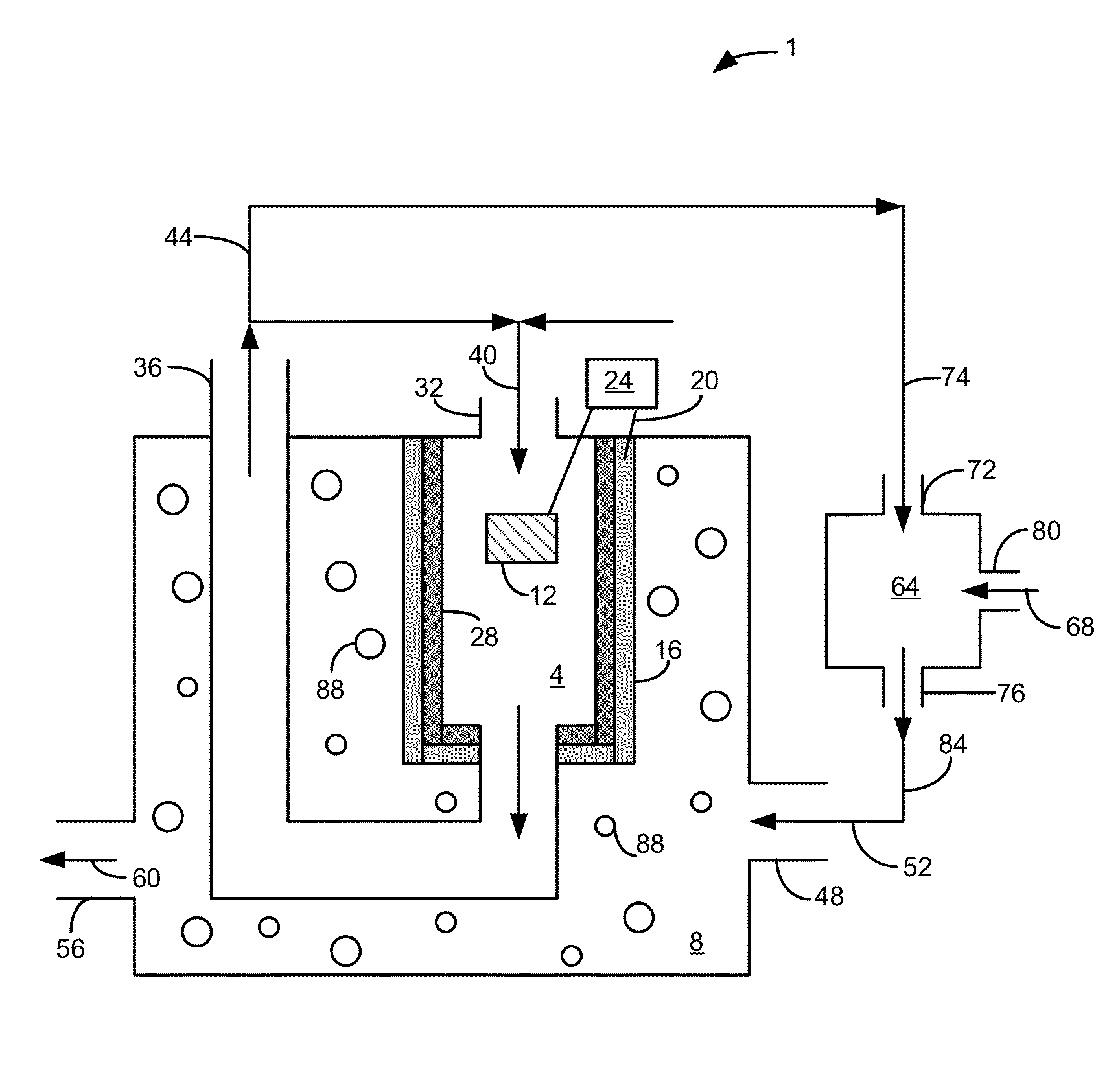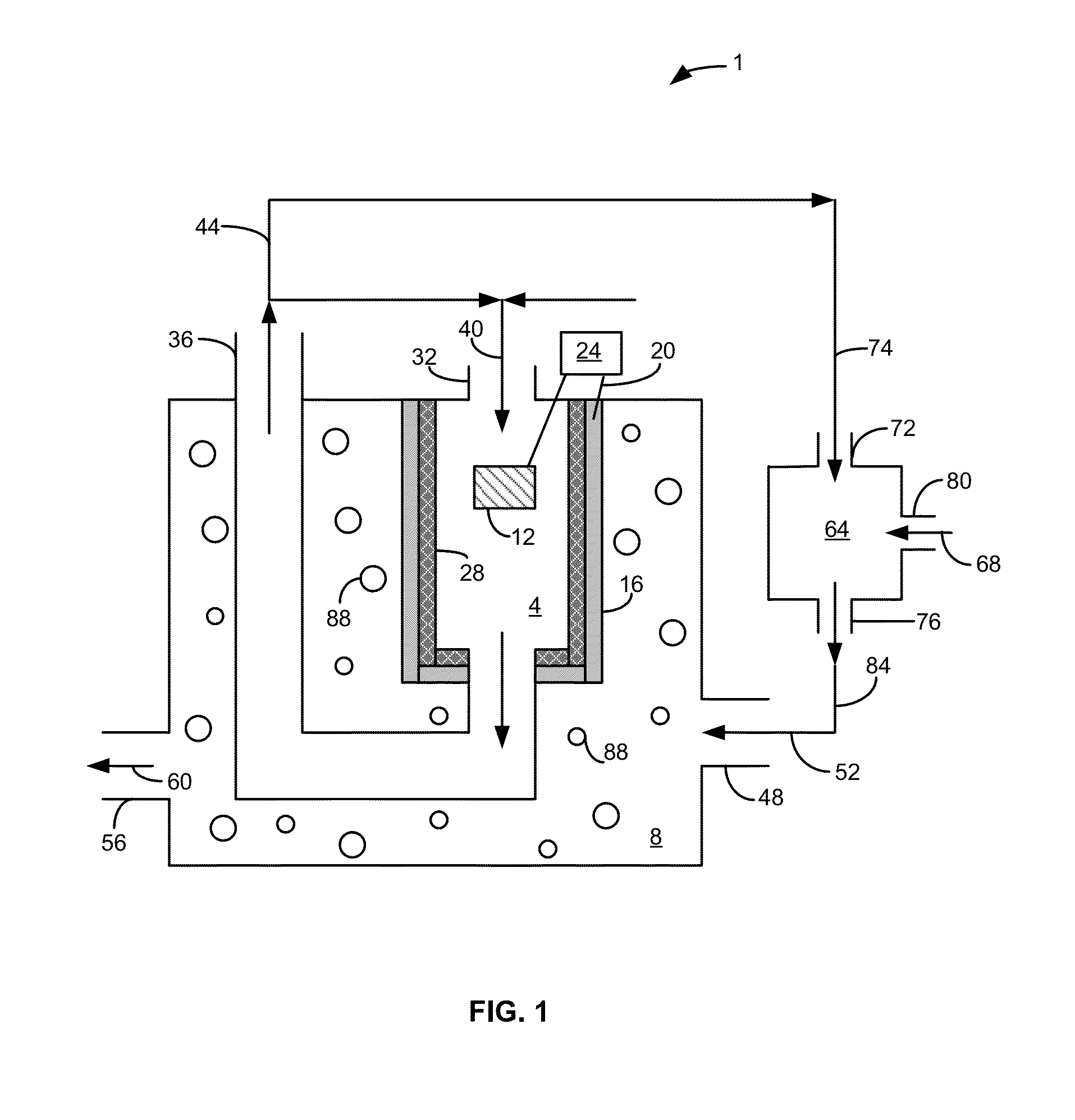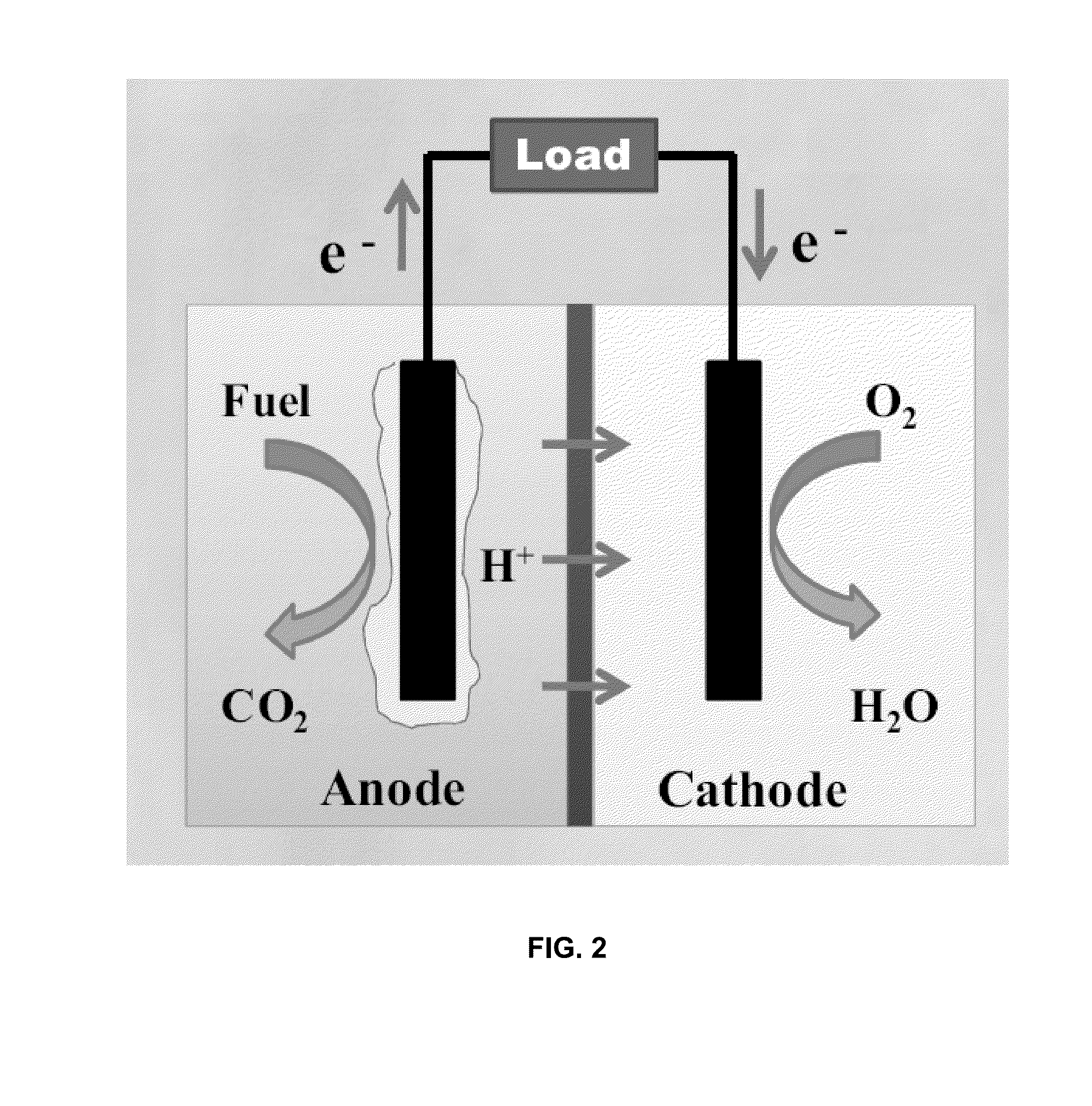Integrated photo-bioelectrochemical systems
a photobioelectrochemical and integrated technology, applied in the direction of electrochemical generators, electrical appliances, fuel cells, etc., can solve the problems of not removing other contaminants, consuming a large amount of energy for such plants, and unable to manage nutrients (e.g., nitrogen and phosphorus)
- Summary
- Abstract
- Description
- Claims
- Application Information
AI Technical Summary
Benefits of technology
Problems solved by technology
Method used
Image
Examples
example 1
Integration of Microbial Fuel Cells (MFCs) into Algal Bioreactors for Simultaneous Wastewater Treatment, Bioelectricity Generation, and Biomass Production
[0067]Municipal wastewater treatment plants play a role in environmental protection but the operation of these facilities consumes intensive energy. MFCs are a promising and alternative approach to wastewater treatment as MFCs capture energy in the form of electricity, thereby reducing the overall energy requirement for the treatment of water (FIG. 2). MFCs, however, cannot efficiently remove nutrients such as nitrogen (N) and phosphorus (P) from water. Algal treatment of wastewater can be used to remediate wastewater, especially via the removal of nutrients and heavy metals from the water. Specifically, algal bioreactors consume nutrients such as nitrogen and phosphorus during algal growth, resulting in the production of algal biomass, which in turn can be used to make biodiesel (FIG. 3).
[0068]MFCs were integrated into an algal bi...
example 2
Nutrient Removal Through Energy Production in an Integrated Photo-Bioelectrochemical System
[0080]This study examined the performance of an IPB system under the influence of illumination (i.e., under light conditions) and under aeration. The dissolved oxygen (DO), pH, and temperature in the cathode chamber (i.e., algal bioreactor) of the MFC were monitored. The removal of organics and nutrients (nitrogen (N) and phosphorus (P)) was examined. The microbial communities in the biofilm attached to the cathode electrode were analyzed. These microbial communities may include bacteria that are able to grow on or attach to the cathode. Particularly, these bacteria may perform nitrification (i.e., converting ammonia to nitrate) and / or oxidize any organic compounds present or remaining in the algal bioreactor (e.g., heterotrophic bacteria). Additionally, the planktonic cells in the cathode compartment (i.e., algal bioreactor) were also analyzed.
[0081]A. Materials and Methods
[0082]1. IPB System...
PUM
| Property | Measurement | Unit |
|---|---|---|
| temperatures | aaaaa | aaaaa |
| temperatures | aaaaa | aaaaa |
| temperature | aaaaa | aaaaa |
Abstract
Description
Claims
Application Information
 Login to View More
Login to View More - R&D
- Intellectual Property
- Life Sciences
- Materials
- Tech Scout
- Unparalleled Data Quality
- Higher Quality Content
- 60% Fewer Hallucinations
Browse by: Latest US Patents, China's latest patents, Technical Efficacy Thesaurus, Application Domain, Technology Topic, Popular Technical Reports.
© 2025 PatSnap. All rights reserved.Legal|Privacy policy|Modern Slavery Act Transparency Statement|Sitemap|About US| Contact US: help@patsnap.com



